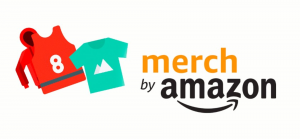
The Ultimate Guide to Dropshipping Business in 2024 : Pros & Cons Included

Are you interested in starting an online business but don’t want to deal with managing inventory? Dropshipping is your business solution. Learn what dropshipping is, how it works, and its pros and cons in this detailed guide.
As a new entrepreneur, it is always a struggle with limited resources such as time and money. For a startup, generating profits right away can be challenging, and without enough funds to pay yourself or your employees, the pressure is on to make sales.
That’s where dropshipping comes in and saves the day! It’s a popular business model for first-time business owners, as it involves outsourcing manufacturing, warehousing, and shipping to a third-party seller. This approach helps keep costs low, giving you more time to focus on crucial tasks like marketing and creating an unforgettable online shopping experience for your customers.
However, dropshipping can be overwhelming for beginners, and understanding where to start can be a challenge. That’s why it’s essential to clearly understand the basics before diving into it.
Dropshipping meaning
Dropshipping is a business model where you partner with a supplier or dropshipper to sell products online. Unlike traditional retail, you don’t hold any physical product inventory. Instead, you obtain images of the products and list them in your store. Once your customer orders on your website, your dropshipper picks, packs, and ships the order directly to your customer. The order fulfillment is completely taken care by your dropshipping supplier.
While dropshipping may appeal to businesses who want to sell generic products, it might limit opportunities to create a brand and differentiate products. As a result, dropshipping businesses may end up competing on price, leading to low-profit margins.
How does the dropshipping business work?
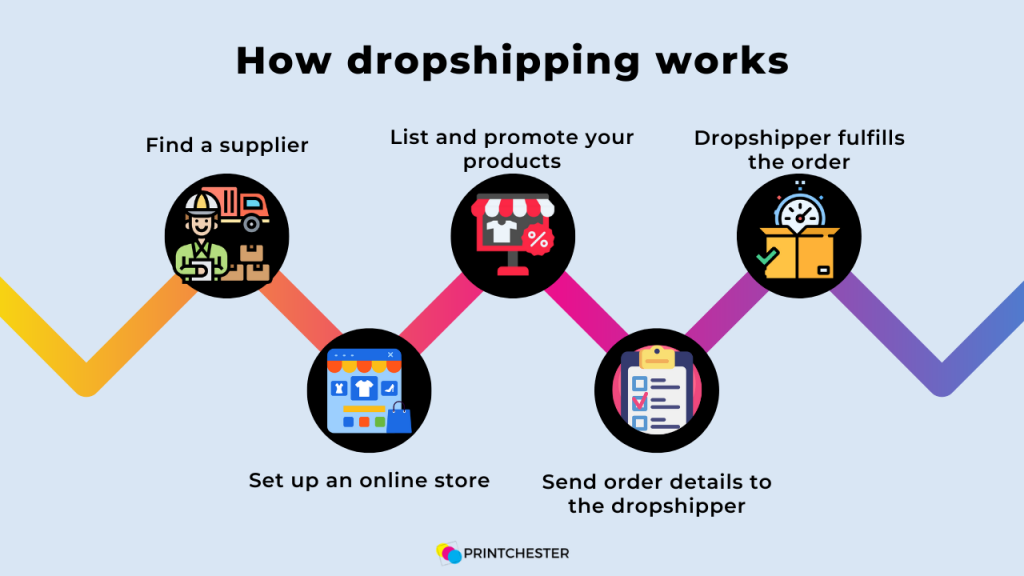
Setting up a dropshipping business is easy, and here’s how it works:
Step 1: Find a trustworthy dropshipping supplier to partner with.
Step 2: Create an online store and list the products you want to sell.
Step 3: Promote your products through social media ads and other marketing efforts.
Step 4: When you receive an order, send the order details to your dropshipper.
Step 5: Your dropshipper partner then picks, packs, and ships the product directly to your customer.
Dropshipping Business - Pros and Cons
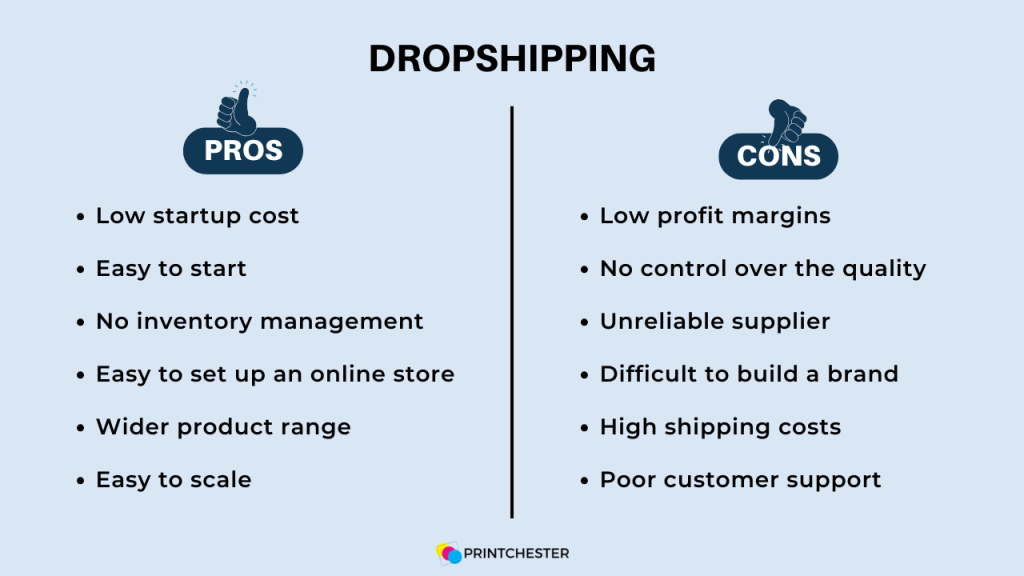
Pros of dropshipping
- Low startup cost
As a dropshipping firm, you don’t need to spend much money on renting a store, stocking products, or employing employees. You only need an internet storefront to lead customers and sell your products. This online store might be hosted on your website or one of the prominent e-commerce platforms like Amazon, Shopify, or Squarespace.
- Low barriers to entry so it is easy to start
When you don’t have to acquire, manage, or provide things, running an e-commerce firm becomes considerably easier. An internet store can be set up in as little as 15 minutes.
Setting up background procedures, including receiving orders, processing orders, forwarding to suppliers, and accepting and making payments, may take a few days longer. However, when compared to opening a conventional retail store, launching a dropshipping operation is far easier.
- No product inventory management
Dropshipping suppliers eliminates the need to manage inventory, handle shipping and refunds, etc.
- Easy to set up an online store
Because your entire operation is online, you can set it up from anywhere. You only need a laptop and an internet connection.
- Wider product range
Because you are not keeping your inventory, it is much easier to diversify into other products based on demand.
- Easy to scale
Scaling up operations is much easier when you’re advertising and receiving orders. All you need is a solid platform capable of handling traffic and accepting orders. The supplier handles shipping and refunds, so find a source who can easily scale up as your business grows.
Cons of dropshipping
- Low profit margins
Dropshipping is a low-cost, low-risk business model. Hence, the hurdles to entry are typically low.
As a result, many other merchants will inevitably enter the dropshipping arena, selling the same products as you and competing hard on price. All this puts pressure on you to offer lower prices than you would prefer.
- No control over product quality
Dropshipping leaves you in the dark regarding the working conditions under which your products were manufactured or who manufactured them.
- Unreliable supplier
Dropshipping frequently requires you to rely on providers you don’t know personally and can’t sufficiently vet. This can result in product quality issues, products go missing due to poor communication and low-quality packaging. All of this, of course, can lead to dissatisfied customers.
- Cannot build a brand with dropshipping
You have limited control over the appearance of many dropshipped products because you often deal with ‘off the shelf’ things that many other merchants sell online. As a result, if having a product line displaying your brand is crucial to you, dropshipping may not be for you.
- High Competition & Managing several vendors might be challenging.
Working with many suppliers for your dropshipping business can result in a difficult supply chain. Different suppliers will have different operating frameworks in place for backend procedures such as shipping, processing, and billing – and these differences can lead to some difficult admin for you.
- Poor customer support
Providing good customer service might be tough when a dropshipping order goes wrong. It is because when a problem arises, you frequently rely on a third-party supplier — someone you don’t know and who may be on the other side of the world — to solve it. This can result in a long wait for a consumer who may be perplexed as to why you, the online company owner, can’t address the issue quickly.
- High shipping costs
Shipping your products may be costly depending on your customers and suppliers’ location.
How to start a dropshipping business in 7 steps
If you’re interested in starting a dropshipping business, here’s a step-by-step guide to help you get started.
Step 1: Choose a Niche

Choosing a niche is the first step in starting a dropshipping business. A niche is a specific category of products that you want to sell. Choosing a niche you’re passionate about with a large market demand is important.
You should consider market trends, competition, and profitability factors when choosing a niche.
You can use tools like Google Trends, Google Keyword Planner, and Amazon Best Sellers to research your niche and identify popular products.
Step 2: Find a Supplier
Once you’ve chosen your niche, the next step is to find a supplier. A supplier is a company that provides products for you to sell in your store. You can find suppliers through online directories like AliExpress, SaleHoo, or Worldwide Brands.
You should consider product quality, price, and shipping times when choosing a supplier. Choosing a supplier that offers high-quality products at a competitive price is important.
Step 3: Set Up Your Online Store

After you’ve found a supplier, the next step is to set up your online store. An online store is a website where you’ll sell your products. You can set up your store using eCommerce platforms like Shopify, WooCommerce, or BigCommerce.
When setting up your store, you should choose a theme that matches your brand and make sure your website is user-friendly. You should also consider payment gateways, shipping options, and taxes.
Step 4: Add Products to Your Store
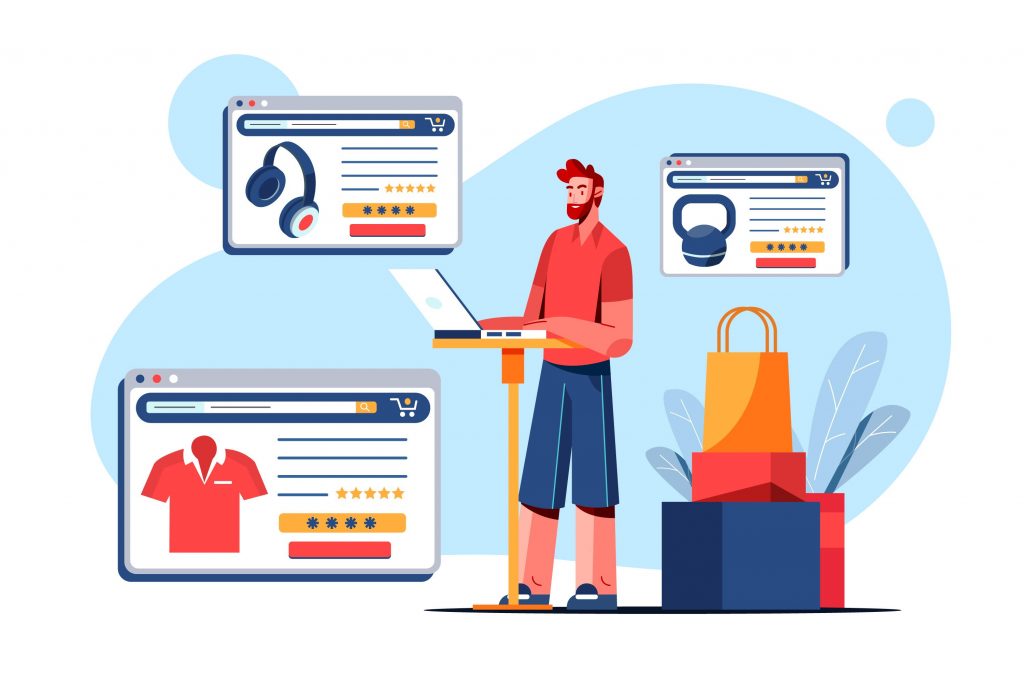
Once your store is set up, the next step is adding products. You can import products directly from your supplier’s website or use a tool like Oberlo to import products from AliExpress.
When adding products to your store, you should write product descriptions that are informative and engaging. You should also consider factors such as pricing, images, and reviews.
Step 5: Market Your Store
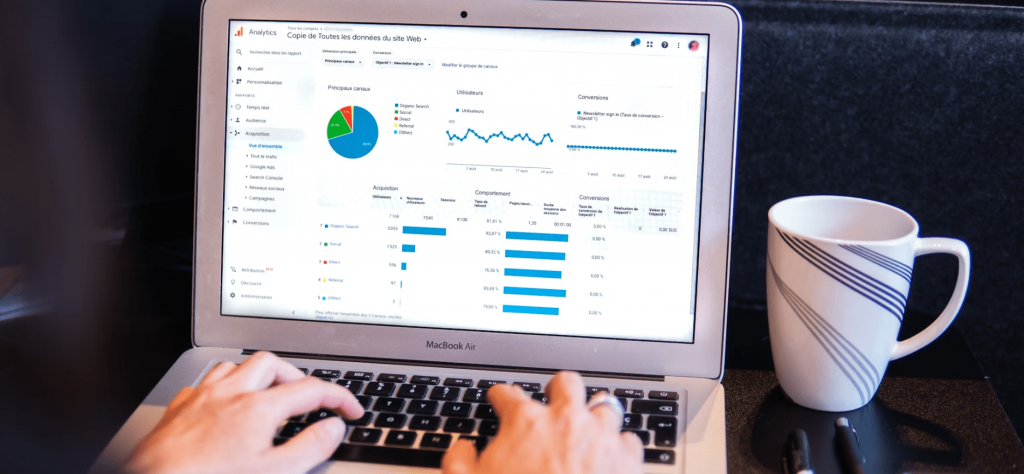
After you’ve added products to your store, the next step is to market your store. Marketing is the process of promoting your store to potential customers.
You can use social media, email marketing, or paid advertising to drive traffic to your store. You should choose marketing channels relevant to your niche when marketing your store. You should also consider factors such as targeting, messaging, and budget.
Step 6: Fulfill Orders
When a customer purchases in your store, the next step is to fulfill the order. Fulfillment is the process of delivering the product to the customer. You’ll need to contact your supplier and place the order on behalf of the customer.
Your supplier or dropshipper will then ship the product directly to the customer. When fulfilling orders, you should consider shipping times, tracking information, and customer support.
Step 7: Analyze Your Results
After you’ve fulfilled orders, the final step is to analyze your results. Analysis is the process of measuring your performance and making improvements. You can use analytics tools like Google Analytics to measure your website traffic and sales.
Consider conversion rates, average order value, and customer feedback when analyzing your results. You should also make adjustments to your marketing strategy based on your results.
Conclusion
Running a dropshipping business requires detailed planning and execution. Following these steps, you can start a successful dropshipping business and earn passive income. Remember that success in dropshipping depends on factors such as niche selection, supplier management, website design, marketing, and analysis. You can launch and grow a profitable dropshipping business with hard work, persistence, and creativity.
Frequently Asked Questions
Dropshipping is a business model where you, as a retailer, sell products without keeping inventory or shipping the products yourself. It differs from traditional eCommerce because you work with a supplier who ships the product directly to the customer.
The key advantages of using dropshipping as a business model are that it eliminates the need for inventory, reduces costs, allows entrepreneurs to test different products and niches, and provides flexibility regarding location and time.
When choosing products to dropship, consider market demand, competition, profitability, product quality, pricing, and shipping times.
Effective strategies for finding reliable dropshipping suppliers include using online directories, attending trade shows, contacting manufacturers directly, and considering product quality, price, and shipping times.
In a dropshipping business, the supplier is responsible for order fulfillment and shipping. Maintain good communication with the supplier, provide excellent customer service, have a clear return policy, and work with the supplier to handle returns properly.




